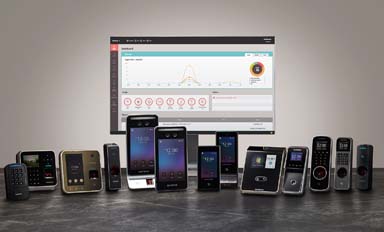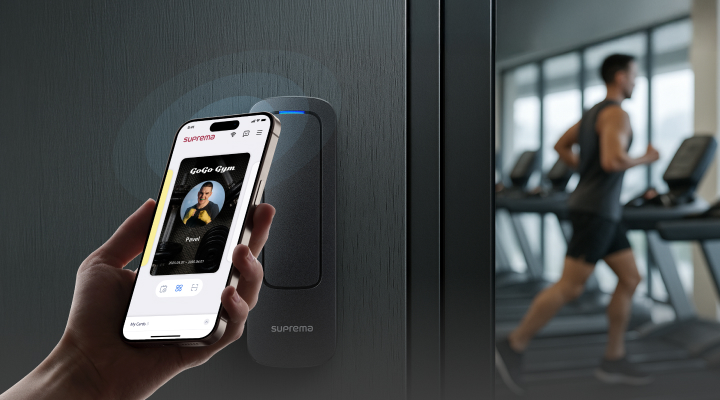- PRODUCTS
- PLATFORM
- BioStar 2 Access Control
- BioStar Air Access ControlNEW
- BioStar 2 Time and Attendance
- Suprema Mobile Access
- HARDWARE

- Biometric Readers
- RF/ Mobile Readers
- Intelligent Controller
- Peripherals
- OEM Biometric Modules
- Wireless Door Locks
-
Discontinued Products
- 4 Door Kit
- FaceLite
- BioStation A2
BioMini Plus 2
- BioStation 2
- OMNIS
X-Station 2(XS2-QAPB, XS2-QDPB)
- BioStation L2
- SOLUTIONS
- SUPPORT
- ABOUT
- device_hubHUB
- Blogs & Articles

Welcome to the first episode of Make Way, Suprema’s new podcast where we look at the world of access control from fresh angles. Hosted by Erik, with Drew joining as our guest from Australia, we kick things off down under, or as we like to call it, the down underside of security. This episode unpacks what makes the market unique, and what it really takes to build a security business there.
1) Why Australia doesn’t look like everywhere else
Australia’s security market has evolved in its own direction. Geography, regulation, and working culture shape how projects get designed and delivered.
ㆍVast distances, thin margins.Rolling a truck can mean hours. Anything that avoids site visits (remote diagnostics, cloud management, offline-capable credential) saves real money and goodwill.
ㆍInstallers vs integrators.On-the-tools installers dominate day‑to‑day work; integrators tend to be the firms stitching brands and software together into one experience. (And yes, you’ll hear “sparkies” when electricians step in.)
ㆍLocal incumbents matter.Inner Range and Gallagher (plus ICT) anchor many enterprise footprints. New entrants must offer clear value, not just lower cost.

2) The fire‑rating wall: mortise locks and certification
If you want to sell a lock for a fire door in Australia, you don’t “certify a lock.” You certify a doorset with that lock and mortise. And you do it across multiple door constructions (timber, steel, composite, specialty). Each configuration gets tested, and the bill is meaningful. The result? a substantial barrier to entry that discourages fast-follower products and favors well‑funded brands or local partners.
Takeaway: Treat certification as a go‑to‑market cost, not a checkbox. If you’re a builder or consultant, push for proof that the exact door + mortise + lock combination is on the test report.
3) Biometrics: quality threshold high, privacy nerves real
Australia is receptive to new tech but holds it to a ruthless standard: it must work, every time. Biometrics are no exception.
ㆍReliability first. Buyers will trial facial authentication, but only if it’s fast, consistent, and easy for non‑technical staff.
ㆍPrivacy scars. High‑profile retail and CCTV face‑recognition stories left a “bad taste,” so messaging must separate face recognition in the wild (identify anyone) from face authentication at the door (verify a consenting user).
ㆍTemplate, not portrait. Modern readers can discard the face image and retain a non‑reversible template (“hash”), which can’t be reconstructed into a face. That fact, explained plainly, reduces fear and speeds approvals.
4) Digital payments and digital ID: a ready audience
Australians are comfortable with cashless living and digital identity. That climate helps normalize phone‑based credentials and app‑less entry (QR, links, Apple/Google wallet passes). underscore strong wallet preference and real‑time payment growth, which dovetails with expecting doors to work from a phone.
Practical edge: If your access flow feels like a checkout flow (simple, mobile, instant), you’re speaking the user’s language.
5) Connectivity reality: mobile rules the gaps
Australia is proud of its nationwide connectivity which is broad enough to support always‑on management in cities and pragmatic workarounds in the regions. For remote sites (mines, power, agriculture), teams lean on mobile networks, Starlink, and minimal cabling. Cabling is often the cost killer; every meter avoided matters.
The new disruption: edge access control readers that only need power and can buffer events, validate locally, and sync when a phone or network is available. That’s the difference between “works on paper” and “survives the outback.”
6) Growth corridors you shouldn’t ignore
Three use cases are now standing out as near‑term opportunity:

ㆍGyms and boutique fitness. Memberships are rising, 24/7 access is standard, and cross‑site entry is expected. Mobile credentials trim staffing at odd hours and eliminate plastic cards that get lost in the locker room.
ㆍBuild‑to‑Rent (BtR). A fast‑expanding pipeline pairs residential units with premium amenities (gyms, co‑working, theatres). That’s a lot of doors, plus shared spaces and lift control that need one identity across many zones.
ㆍLightly manned or unmanned spaces. Co‑working and hospitality are standardizing remote tours and instant credentialing. The owner can grant access from another city and audit usage without being on site.
7) The Aussie blend: access + alarms
Unlike markets where alarms and access live apart, Australian customers often want one joined system. They assume a determined person can force entry; the question is what happens next. Tightly coupling alarms, sensors, access logs, and movement trails is the norm. If you don’t propose it, someone else will.
8) Cloud, done on Australian terms
Australia shows a real momentum toward cloud administration with two caveats:
1. Keep on‑prem options for schools, hospitals, and agencies that must.
2. Host in Australia when policy requires local data residency.
When those boxes are ticked, cloud support becomes a service margin machine: fewer truck rolls, faster fixes, and calmer customers.
Bottom line
Australia rewards solutions that travel light, prove reliability, and respect privacy. If your design cuts cable runs, handles weak connectivity, speaks mobile fluently, and treats identity with care, you’ll fit the market’s rhythm—from CBD lobbies to regional gyms and BtR towers. The first episode of Make Way paints that picture candidly; treat this brief as your checklist the next time an RFP lands on your desk.
About Make Way - Make Way is Suprema’s new podcast. It’s all about bringing stories, insights, and a different perspective to security. Sometimes sharp, sometimes sideways, always worth a listen. Subscribe to our YouTube channel and don’t miss out on the next entry in the series.











